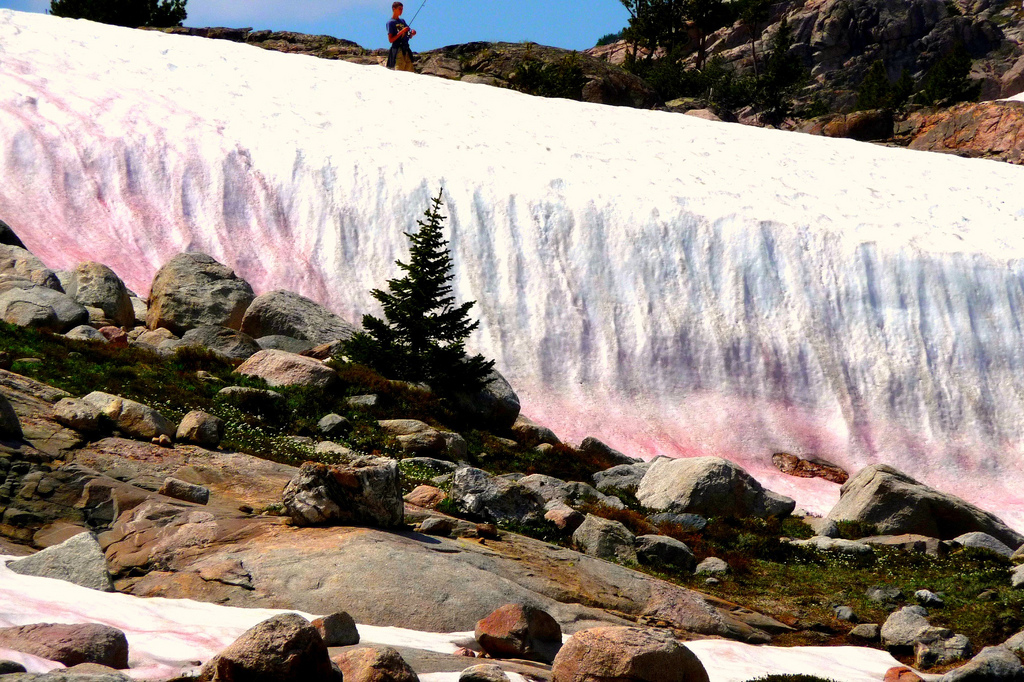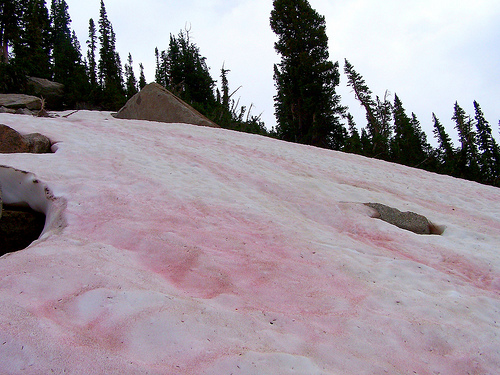

THE SNOW PLANT.
FAR away to the north, in the regions of perpetual ice and snow, where the sun never rises and sets* but once a year, is to be found a little plant so small that it would take two or three thousand of them to cover your thumbnail. This plant has a long Latin name, which scientific people have given it, and may be translated to you as red snow. It flourishes in the coldest of climates, growing upon the surface of the cold, white arctic snows, sometimes spreading out for miles, and so dense as to be several feet thick.
When Sir John Ross first sailed up Baffin's Bay, he saw this red snow extending upon the shore to a distance of eight miles, and about twelve feet deep. It must have been a beautiful sight as it grew in the midst of the white drifts. From that day these bluffs went by the name of the "Crimson Cliffs."
But we are not obliged to go to the North Pole to find red snow. It is also found upon the tops of mountains, above the snowline, where the snows of many winters are piled up upon each other, until they fall below as avalanches, or become glaciers.
Our own country is not behind others in respect to the snow plant.
Some years ago I had some red snow given me, which came all the way from California, that land of wonders.
Now, so tiny is this snow plant, that a powerful microscope must be used to see one perfectly. This requires it to be magnified several hundred times in diameter, as naturalists say, which makes one of these little plants look about the size of a gold-dollar piece.
They are not, however, of the same size. This no doubt seems very strange to you, to hear one talk about something which the unaided eye cannot see at all as being of different sizes, some larger, and some smaller, and of them none so large as the smallest of mustard-seeds.
A very curious thing about red snow is that a kind of motion is observed in it; but this is only a signal of growth. When growth begins, this motion stops; when growth ends, then locomotion commences, and the plant spreads or extends itself over the snow; and this process goes on until large patches of the snow plant are formed.
Well-Spring.

